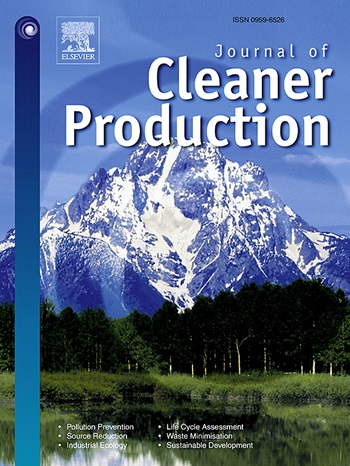基于固废协同作用的活化铜尾砂注浆材料制备及性能特性研究
IF 9.7
1区 环境科学与生态学
Q1 ENGINEERING, ENVIRONMENTAL
引用次数: 0
摘要
随着中国经济社会的快速发展,以尾矿为主体的工业固体废物日益增多,严重威胁着生态环境安全。针对开发注浆材料和处理铜尾矿的双重目标,本研究以铜尾矿(CT)、磨粒高炉渣(GGBFS)和偏高岭土(MK)为原料,开发了一种新型注浆材料。铜尾矿通过不同的方法被活化,包括磨矿、化学添加剂和煅烧。通过x射线衍射(XRD)、傅里叶变换红外光谱(FTIR)和扫描电镜(SEM)分析了其活化机理。采用响应面法(RSM)考察影响实验响应变量的因素之间的相互作用。研究结果表明,铜尾矿的最佳磨矿时间为20 min,铜尾矿的最佳焙烧温度为800℃。不同活化方式下铜尾矿的活度指数由高到低依次为:机化热活化(81.4%)、机化活化(79.6%)、机热活化(75.7%)、机械活化(74.5%)、热活化(71.8%)。从活化成本和效率两方面考虑,认为机械-化学活化是最优的活化方法。注浆材料的最佳配比为:CT 20.6%、GGBFS 11.5%、MK 8.4%。该注浆材料在水、盐、酸、碱环境中均具有良好的抗腐蚀性能。注浆模型试验中,加筋体的平均抗压强度达到3.09 MPa。浆液均匀地填充和包裹了岩土体的外表面和内部裂缝,具有良好的扩散和加固性能。本研究为工程建设提供了一种高性能、低成本的注浆材料,为尾矿等固体废物资源化利用提供了创新途径。本文章由计算机程序翻译,如有差异,请以英文原文为准。
Research on the preparation and performance characteristics of activated copper tailings grouting material based on solid waste synergy
With China’s rapid economic and societal development, the increasing amount of industrial solid waste, among which tailings are predominant, is seriously threatening ecological and environmental safety. To address the dual objectives of developing grouting materials and disposing of copper tailings, this study develops a new grouting material using copper tailings (CT), ground granulated blast furnace slag (GGBFS), and metakaolin (MK) as raw materials. Copper tailings have been activated through different methods, including grinding, chemical additives, and calcination. The activation mechanisms are analyzed through X-ray Diffraction (XRD), Fourier Transform Infrared Spectroscopy (FTIR), and Scanning Electron Microscopy (SEM). Response surface methodology (RSM) was employed to examine the interactions among factors influencing the experimental response variables. The research results indicate that the optimal grinding time for copper tailings is 20 minutes, and the optimal calcination temperature for copper tailings is 800°C. The activity index of copper tailings under different activation methods is ranked from highest to lowest as follows: mechanical-chemical-thermal activation (81.4%), mechanical-chemical activation (79.6%), mechanical-thermal activation (75.7%), mechanical activation (74.5%), and thermal activation (71.8%). Considering both activation cost and efficiency, mechanical-chemical activation is identified as the optimal activation method. The optimal mix proportions of the grouting materials are 20.6% CT, 11.5% GGBFS, and 8.4% MK. This grouting material exhibits excellent resistance to corrosion in aqueous, saline, acidic, and alkaline environments. In the grouting model test, the average compressive strength of the reinforced body reaches 3.09 MPa. The grout uniformly fills and encapsulates both external surfaces and internal cracks in the geotechnical body, showcasing excellent diffusion and reinforcement performance. This study provides a high-performance, low-cost grouting material for engineering construction, and offers an innovative approach to the resource utilization of tailings and other solid wastes.
求助全文
通过发布文献求助,成功后即可免费获取论文全文。
去求助
来源期刊

Journal of Cleaner Production
环境科学-工程:环境
CiteScore
20.40
自引率
9.00%
发文量
4720
审稿时长
111 days
期刊介绍:
The Journal of Cleaner Production is an international, transdisciplinary journal that addresses and discusses theoretical and practical Cleaner Production, Environmental, and Sustainability issues. It aims to help societies become more sustainable by focusing on the concept of 'Cleaner Production', which aims at preventing waste production and increasing efficiencies in energy, water, resources, and human capital use. The journal serves as a platform for corporations, governments, education institutions, regions, and societies to engage in discussions and research related to Cleaner Production, environmental, and sustainability practices.
 求助内容:
求助内容: 应助结果提醒方式:
应助结果提醒方式:


